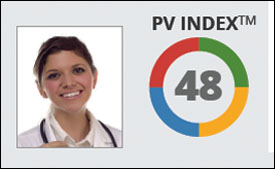Vol. 12, Issue No. 9: December 2013 – EXECUTIVE SUMMARY Active Social Media Listening UCB’s Approach for Achieving Better Patient Experiences  Social media listening is a hot topic these days. There is no doubt that collecting information from disease and product conversations on social media sites helps pharmaceutical companies develop more impactful messaging and marketing tactics.
Social media listening is a hot topic these days. There is no doubt that collecting information from disease and product conversations on social media sites helps pharmaceutical companies develop more impactful messaging and marketing tactics.
Experts urge pharma to focus on the customer, not the brand, when engaging in social media listening. This, they say, will deliver real value to pharma companies and their customers. But what exactly is the “real value” when the customer is the patient?
This was a question explored in a Pharma Marketing Talk podcast interview of Trish Nettleship, Director, Social Media & Influence, UCB, Inc., about her company’s approach to social media listening. According to Nettleship, “active social media listening” helps her company understand patient needs and issues — including adverse events — and how this results in better communications and patient experiences.”
This article summarizes that conversation.
Topics include:
- UCB’s Approach
- Dealing with Adverse Events
- Become a Social Organization
- Current UCB Patient Communities
- Social Listening v. Focus Groups
- Branded v. Disease Conversations
- Budgetary Impact and ROI
- Online Patient Influencers
Download the full text PDF file here:
www.pharma-mkting.com/news/pmnews1209-article01.pdf Evaluating Rx & OTC DTC TV Ads Few Are Outright False But Many May Be Misleading  Between 2004 and 2013, FDA’s Office of Prescription Drug Promotion sent nearly 300 Warning and Untitled letters to pharma companies citing violations in Rx drug advertising. Forty percent of those citations were for risk omission or minimization.
Between 2004 and 2013, FDA’s Office of Prescription Drug Promotion sent nearly 300 Warning and Untitled letters to pharma companies citing violations in Rx drug advertising. Forty percent of those citations were for risk omission or minimization.
The Federal Trade Commission (FTC) oversees advertising for non-prescription, over-the-counter (OTC) drugs.
While FDA and FTC share a common goal, they “do not apply the same working definition of false and misleading advertising, and have different standards for evidence to support truthful and not misleading claims,” according to authors of a recent study published in the Journal of General Internal Medicine. The authors — Adrienne E. Faerber of The Dartmouth Institute for Health Policy & Clinical Practice and David H. Kreling of The University of Wisconsin-Madison School of Pharmacy — posit that the differences between the FDA and the FTC regarding working definitions and evidence standards “may be resulting in differences in the amount of false or misleading adver-tising that is occurring for prescription and nonprescription drugs.”
Their study, which is summarized in this article, evaluated claims in consumer-targeted television drug advertising against pharmacological evidence in order to determine the frequency of false or misleading claims made in these ads.
Topics include:
- Differing Standards of Evidence
- Vanderbilt Television News Archives
- Study Methodology
- False Claims in DTC Ads vs. OTC Ads
- The Slippery Slope Between Truth & Falsehood
- OTC Drug Ads Not Well Scrutinized by FTC
- Key Takeaways for Consumers & Regulators
Download the full text PDF file here:
www.pharma-mkting.com/news/pmnews1209-article02.pdf Measuring Physician Interaction with Pharma Brands Medikly’s Physician Value Index is a New Tool for Optimizing Marketing Performances  With more than $60 billion being spent annually on marketing and communications to healthcare professionals, pharmaceutical marketers need to reinvent how they allocate, optimize, and justify spend through real-time, data-based insights and intelligence.
With more than $60 billion being spent annually on marketing and communications to healthcare professionals, pharmaceutical marketers need to reinvent how they allocate, optimize, and justify spend through real-time, data-based insights and intelligence.
Medikly, an innovative provider of physician engagement solutions, proposes a new model for measuring digital marketing effectiveness: the Physician Value Index or PV Index™, which integrates four key aspects of how a physician interacts with a pharmaceutical brand: (1) presence, (2) participation, (3) influence and (4) sentiment.
Using the PV Index, pharmaceutical marketers can now incorporate a new capability model of measuring marketing performance and its contribution to driving business value.
Venkat Gullapalli, MD and Mark Goldstone, Co-CEOs of Medikly, spoke on the Pharma marketing Talk show about PV Index. This article summarizes that discussion.
Topics include:
- The Digital Analytics Challenge
- Physician Value Index
- Presence, Participation, Influence and Sentiment
- Integrated Data vs. Big Data
- A Blomberg Terminal for Pharma Marketing
Download the full text PDF file here:
www.pharma-mkting.com/news/pmnews1209-article03.pdf



![6 Digital Tools at the Center of Healthcare Digitalization [INFOGRAPHIC]](http://ec2-54-175-84-28.compute-1.amazonaws.com/pharma-mkting.com/wp-content/uploads/2021/04/6DigitalTools_600px-218x150.jpg)




![6 Digital Tools at the Center of Healthcare Digitalization [INFOGRAPHIC]](http://ec2-54-175-84-28.compute-1.amazonaws.com/pharma-mkting.com/wp-content/uploads/2021/04/6DigitalTools_600px-100x70.jpg)




